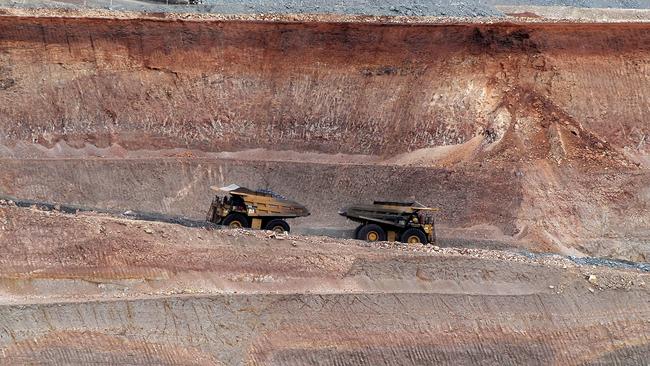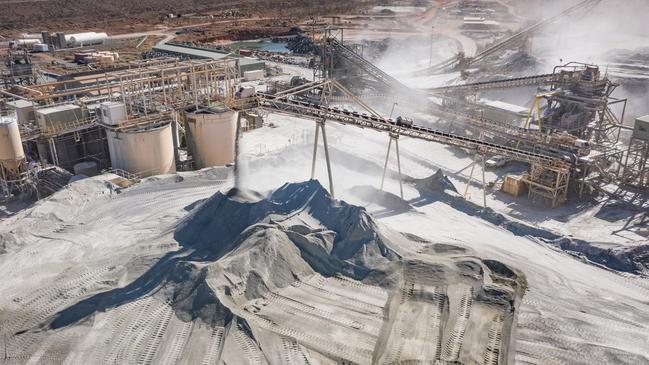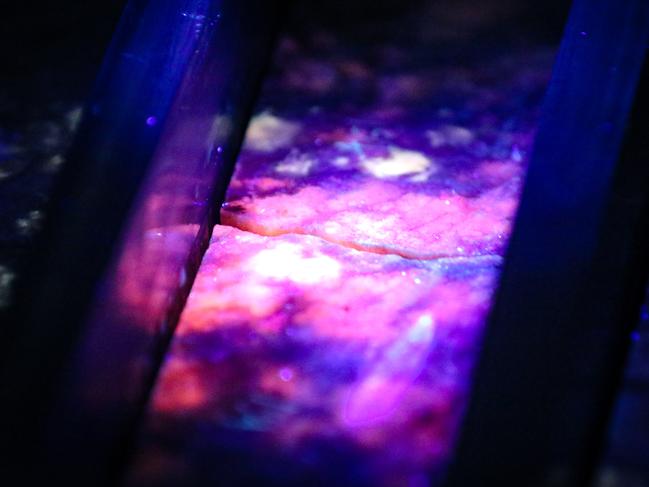Greed for iron ore, rare earth minerals could see the world on its knees
A careful long-term plan orchestrated by China leaves Australia especially vulnerable to a three-pronged “planetary crisis”.
Mining
Don't miss out on the headlines from Mining. Followed categories will be added to My News.
The world is consuming its natural resources faster than ever before. New projections see this bounding a further 60 per cent by 2060. But it comes at a time of soaring risks to global trade – by everything from climate shocks to cash-strapped families.
“It is no longer whether a transformation towards global sustainable resource consumption and production is necessary, but how to urgently make it happen,” warn World Economic Forum International Resource Panel (IRP) co-chairs Janez Potocnik and Izabella Teixeirq.
At the top of the list of growing demand are metals and minerals – especially those involved in electrifying the world’s economy. The international food trade is expected to become even more critical as nations struggle against extreme weather, political events, and war.
“Resources include crops for food, wood for energy, fossil fuels, metals like iron, aluminium and copper, nonmetallic minerals, as well as land and water,” the WEF states.
But the race to exploit this demand has already produced a three-pronged “planetary crisis”, warns the United Nations.
That’s climate change, biodiversity loss and pollution.
The WEF Global Risks Report 2024 lists extreme weather as the most likely cause of a global-scale crisis this year – with the odds at 66 per cent.
AI-generated distortion of news and opinions is placed second, at 53 per cent, with political polarisation at 46 per cent.
The probability of the ballooning cost-of-living crisis producing widespread economic and political fallout is 42 per cent.
And the escalation or outbreak of armed conflict comes in at 25 per cent.
WEF Managing Director Saadia Zahidi states, “These transnational risks will become harder to handle as global co-operation erodes.”
A new world disorder
“Despondent headlines are borderless, shared regularly and widely, and a sense of frustration at the status quo is increasingly palpable,” states Zahidi. “Together, this leaves ample room for accelerating risks – like misinformation and disinformation – to propagate in societies that have already been politically and economically weakened in recent years.”
The WEF report says two-thirds of the respondents to its survey of economic and strategic analysts say global rules and norms will become increasingly challenged over the next 10 years. And that is likely to lead to reduced co-operation at a crucial time in the rush to prevent global temperatures increasing by an average of 3C.

The keywords are “multipolarity”, “decoupling”, and “de-risking”.
China, now the world’s second-largest economy, began the trend in the 1990s by imposing strict controls over foreign investment and corporate activities within its own economy. Competition from foreign companies is strictly controlled, and most social and traditional media services banned.
And recently, international auditors and compliance investigators have become targets of new “business secrets” legislation that can designate them as foreign spies.
After several economic shocks – such as the ban on a wide range of Australian trade goods and barring exports of critical minerals to Japan and South Korea – other leading economies are taking a leaf out of Beijing’s playbook.
And the Australian government is hoping to capitalise on this trend by addressing one of these global risks – reliable, sustainable supply of critical minerals and rare earths.
Mineral matters
Iron ore is by far Australia’s biggest export earner, at between $80 and $100 billion each year. Gold is in second place at $25 billion. Alumina — which other nations smelt into aluminium — is worth $20 billion.

So why all the fuss about critical minerals and rare earths?
Raw lithium is by far the largest earner for Australia among those categories at $16 billion.
But the heart of the matter is the need to guarantee supplies of high-performance materials at the heart of the technological battle against climate change.
They’re rare to find. They’re hard to refine. And corporate aversion to risk has largely left the Chinese government as the principal investor in recent decades.
“China occupies a dominant position in the global supply chain for critical minerals,” states Dr Marina Yue Zhang and Professor Xunpeng (Roc) Shi of the Australia-China Relations Institute at the University of Technology Sydney.
“In the production of graphite and rare earth elements, China not only produces 70 per cent of the world’s supply but also dominates almost the entire supply chain.”

That, they write in the Lowy Institute’s Interpreter publication, is the result of careful long-term planning by the Chinese Communist Party.
“China has developed significant advantages in the critical minerals sector through a strategy that combines innovation, specific industrial policies, financial incentives, and an original approach to environmental management,” they say. “Substantial government policy support and subsidies have helped Chinese enterprises invest in research and development and have aided exploration and mining activities when futures remained unclear. By cushioning the financial risk and encouraging investment, the Chinese mining sector has been able to expand its capacity and technological expertise across the critical minerals supply chain.”
Unrestricted competition
“China’s calculus is simple: Technology forms the backbone of economic and military superiority,” argues European Council on Foreign Relations geoeconomist Agathe Demarais.
“Technological self-sufficiency, to Beijing, is therefore an existential imperative to survive and thrive.”
Critical minerals and rare earths form the heart of much modern technology.
Yue and Shi argue that China’s dominance in these sectors is reason for Australia to seek co-operation, not decoupling.
“This narrative overlooks the interdependent nature of modern economies, where the integration of supply chains and the free flow of knowledge and innovation are not just beneficial but essential for global progress on green energy transition,” they write. “China’s role, therefore, should transcend national boundaries, influencing global markets and innovation ecosystems.”

But that message, argues Demarais, also needs to be directed back at Beijing.
“The United States and Europe did not invent de-risking — China did. And it very much looks like the most skilled practitioner in the field …
“A look at the latest statistics from Chinese customs shows that China has lately sped up trade de-risking, with a clear effort to diversify ties away from seemingly unfriendly Western states.”
A world of risk
“Facing the dual challenges of increasing demand for critical minerals and concerns over supply chain security, the international community must establish more open and inclusive international co-operation mechanisms,” argue Yue and Shi.
“For Australia, attracting Chinese investment, technology and talent within this multilateral mechanism not only aids in diversifying the global supply chain but also helps its mining sector move upwards on the global value chain.”

However, China’s financial system is closed. And only about four per cent of Chinese stocks are in the hands of foreign investors.
China’s banking system is similarly walled off from global markets, with strict controls over the movement of funds in and out of the country.
And Beijing is moving to create its own international monetary exchange system to bypass potential future sanctions, such as those imposed on Russia for its invasion of Ukraine.
But that’s not stopping Chinese diplomats from venting fury at attempts from other nations to reduce their exposure to economic coercion.
“De-risking is a two-way street,” says Demarais. “Economic ties give significant leverage to the United States and Europe over Beijing, even if some will argue that the idea of economic interdependence leading to co-operation and peace crashed and burned with the Russian invasion of Ukraine. But the ongoing process of severing the links between China and the West will inevitably diminish the deterrence effect of Western sanctions threats, making the world — and the Taiwan Strait in particular — a less safe place.
“This is exactly China’s strategy, with Chinese ambitions to annex Taiwan being one of the key reasons behind China’s plans for self-sufficiency in the first place.”
Jamie Seidel is a freelance writer | @JamieSeidel
Originally published as Greed for iron ore, rare earth minerals could see the world on its knees





